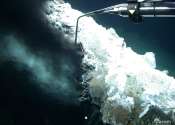New study finds connection between fault roughness and the magnitude of earthquakes
A new study led by McGill University has found that tectonic plates beneath the Earth's surface can show varying degrees of roughness and could help explain why certain earthquakes are stronger than others.









